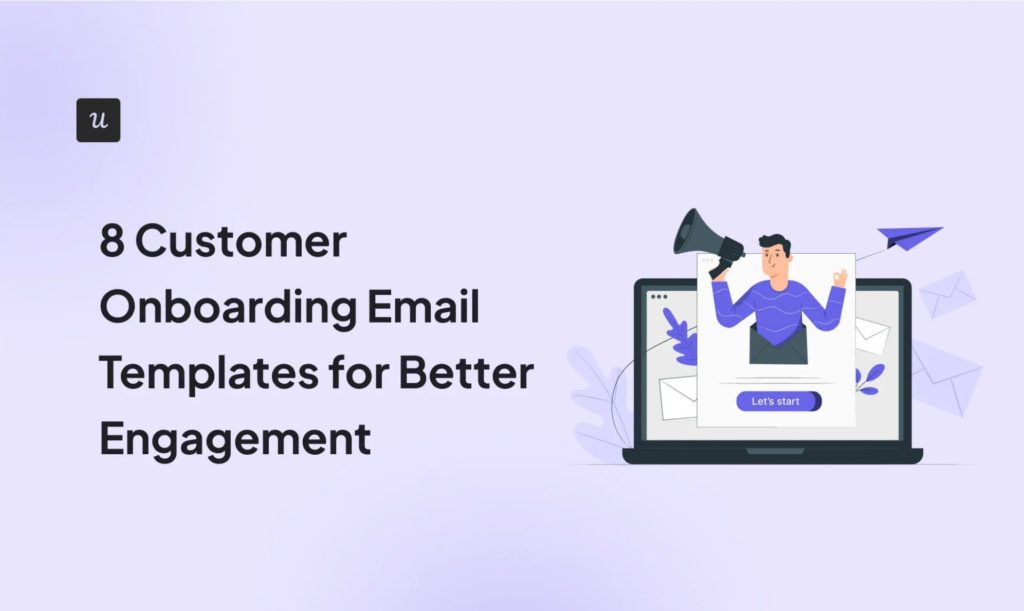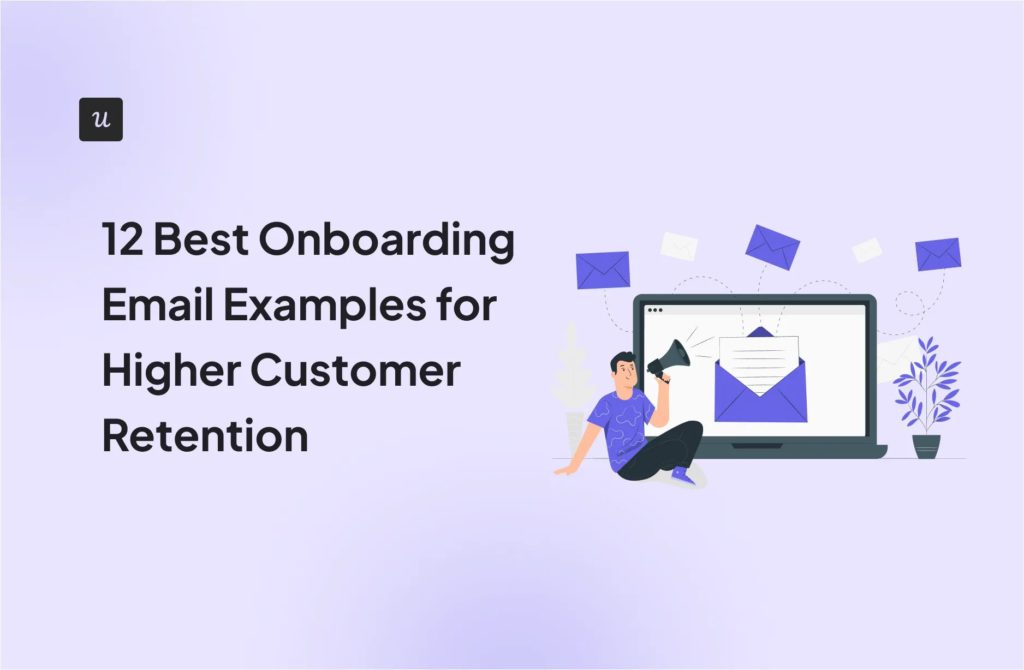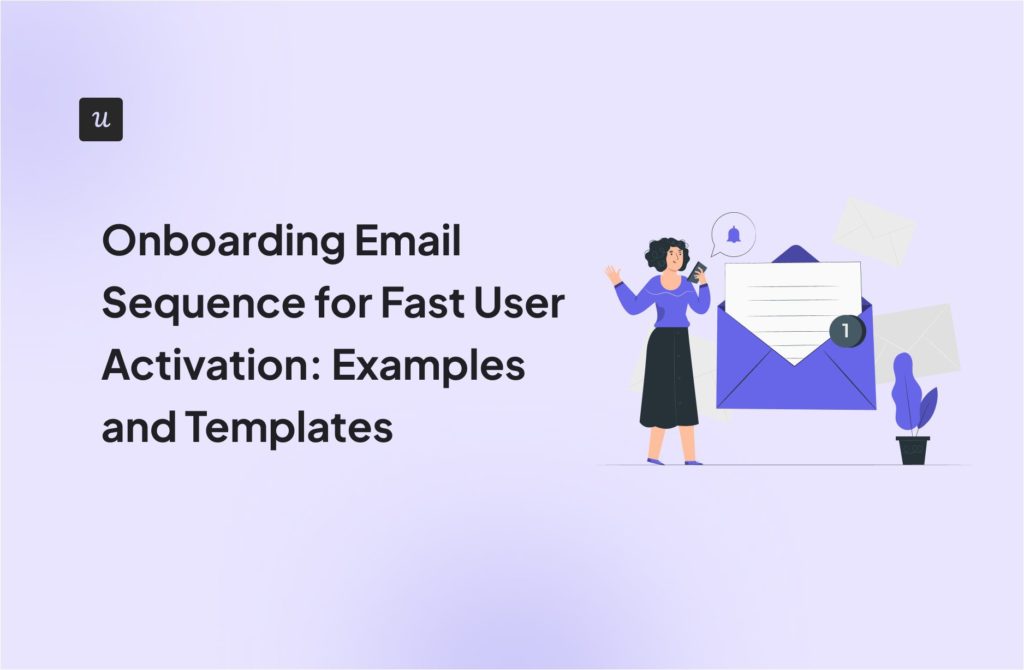![15 Effective Customer Engagement Marketing Strategies for SaaS [+ Examples] cover](https://blog-static.userpilot.com/blog/wp-content/uploads/2021/12/15-effective-customer-engagement-marketing-strategies-for-saas_8639e34baf5005eb26747e60884033ce_2000.png)
15 Effective Customer Engagement Marketing Strategies for SaaS [+ Examples]
The right customer engagement marketing strategies won’t only help you acquire more customers but also retain them.
So what strategies can help you ensure your users don’t just sign up, but also stay, engage, and convert into loyal advocates?
That said, let’s explore the essence of engagement marketing, why it’s essential in SaaS, and 15 actionable customer engagement strategies you can quickly apply.
Get The Insights!
The fastest way to learn about Product Growth, Management & Trends.
What is engagement marketing?
Engagement marketing is the level of involvement and interactions that customers have with a brand’s product or service. Its goal is to foster continuous two-way communication and interactive experiences that meet customer needs, enhance their brand perception, and encourage loyalty.
Tactics such as interactive content, personalized messaging, and real-time support are used to increase engagement levels—therefore driving repeat business, revenue, and customer advocacy.
What is a customer engagement strategy?
A customer engagement strategy is a set of tactics designed to create meaningful interactions between a brand and its customer base throughout the customer lifecycle.
It can involve using targeted messaging, personalized experiences, and interactive platforms to engage customers, fostering loyalty and encouraging active participation with the brand. The ultimate goal is to enhance customer satisfaction, retention, and lifetime value by making every interaction count.
Why is customer engagement marketing important in SaaS?
Given how crucial customer retention is in SaaS, developing a customer engagement strategy is almost a necessity.
The reason is simple: Engaging customers effectively ensures they realize the full value of your product, reducing churn rates and increasing the likelihood of upsells and cross-sells.
Plus, there are even more benefits to increasing customer engagement:
- Enhanced customer retention and LTV as a result of prolonged customer relationships
- Reduced customer churn as engaged customers become loyal customers.
- Increased brand advocacy, with satisfied and engaged customers promoting your brand through positive word-of-mouth.
- Enhances product adoption by encouraging the use of new features.
- Provides valuable feedback for product improvement.
- A more in-depth understanding of your customers’ needs, preferences, and behaviors as you start interacting with them and gaining insights from customer analytics.
- A customer engagement strategy creates cross-selling and up-selling opportunities as users engage with your product.
15 Effective customer engagement strategies for SaaS marketing
Going through the process of making a customer engagement strategy might feel overwhelming without enough ideas.
That said, let’s go over 15 successful customer engagement strategies that you can apply in a SaaS business:
Share helpful content with your target audience
Valuable content such as blogs, videos, and social media posts can engage audiences and help them consider the value of your product.
To do this, create a content strategy where you outline exactly:
- Your marketing goals
- Who your audience is (you can create user personas based on research)
- The main topics where your product is relevant
- The channels where you’re going to publish your content (based on what your audience consumes the most)
- The format in which you’re going to create it
- The customer engagement metrics that determine its effectiveness (e.g., website engagement)
Once done, all you need to do is to start creating content and iterate your strategy as you start analyzing the results (keep in mind that content marketing can take some time to build up).

Personalize product experiences based on customer data
According to a McKinsey study, 76 to 78% of consumers are more likely to purchase, recommend, and make repeat purchases from companies that personalize the customer experience.
A great opportunity to personalize the product experience is during the signup process, as you can use welcome surveys to collect relevant data such as goals, JTBDs (Jobs To Be Done), and job roles before they even start using your product.
This way, you can automatically use their data to trigger specific onboarding flows and in-app messages that cater to their particular needs.

Note: If you don’t know how to collect customer data without hurting UX, you can register for this webinar to learn the UX best practices (especially if you’re in FinTech).
Trigger interactive guidance to drive customer interactions
Another way to engage customers is to present your product features interactively.
For example, Kommunicate makes an effort to introduce its users to its product through interactive walkthroughs. So instead of showing a generic product tour that users are likely to skip, you can implement an in-app flow that:
- Hand-holds users step by step with progressive onboarding.
- Responds to in-app behavior in real-time.
- Avoids overwhelming users with information they won’t retain.
- Enhances their learning experience.

Capture customer attention with in-app notification modals
In-app notifications are a powerful tool to grab a user’s attention without being intrusive.
To implement these notifications without annoying users, however, make sure you’re providing upfront value, triggering notifications contextually based on user behavior, and making it optional for users to take action. So if, for instance, a user completes a specific task, an in-app notification could offer additional related features or tips that are relevant to their goal.
This strategy ensures users see the relevance in each notification, enhancing their experience and engagement without feeling overwhelmed.

Utilize GIFs or micro-videos when introducing new features
Visual content like GIFs and micro-videos can dramatically improve feature adoption.
Notion, for example, effectively uses GIFs to demonstrate the application of its diverse features, making it easier for users to grasp their utility quickly.
That said, try to incorporate micro-videos or GIFs in your onboarding process or new feature announcements. It won’t only make the learning process more engaging but also help reduce the cognitive load on your users—encouraging them to explore and use new features.

Offer limited-time trials of premium features
Paywalls can sometimes prevent the right users from using game-changing features.
That said, limited-time trials of premium features can significantly enhance user engagement by allowing users to experience the full capabilities of your product, for free.
This works particularly well when you target users who have shown interest in specific features. So if, for example, you’ve identified users interested in analytics through signup surveys, you can offer them a limited trial to explore these features.

Host regular webinars to engage existing customers
Webinars offer a dynamic way to engage with existing customers by providing them with valuable insights, training, and sneak peeks into upcoming features.
At Userpilot, for example, we regularly host webinars to teach our user onboarding and PLG best practices live.
For this, make sure to host webinars that are tailored to solve real-life problems, optimize Jobs To Be Done (JTBDs), or introduce new perspectives on work processes. Even better if you can address the specific interests and challenges of your audience—maximizing engagement in the process.

Collect customer journey data to enable conversational marketing
Conversational marketing leverages real-time conversations and personalized messaging to engage users more deeply through chatbots, live chat, or personalized emails.
For example, tracking which features a user interacts with or their survey responses can help you interact with them in more relevant conversations that align with their individual preferences and behaviors.
To do this, you need to collect data across the customer journey so you can tailor conversations to match users’ more emergent pain points, needs, and tasks—making dialogue more engaging.

Use gamified challenges to encourage product usage
Gamification introduces an element of fun and competition, making it a great tool to encourage users to engage more deeply with your product.
SurferSEO, for instance, capitalized on this by launching a challenge for its community to create 50,000 articles, rewarding participants with credits and a special reward upon completion.

This challenge helps them stimulate user activity and drive community engagement while making the product experience more enjoyable and rewarding.

To pull this off:
- Identify key behaviors you want to encourage
- Set clear goals and rewards
- Communicate the challenge effectively to your user base
Deliver contextual upgrade prompts to increase the customer lifetime value
When done well, adding more upgrade prompts can drive more sales and increase your customer lifetime value.
For example, for active users who use the billing feature frequently, you can trigger an upgrade prompt that offers a premium plan with a more advanced, automated billing system.
But, instead of bombarding users with upselling messages, try to limit yourself to trigger them contextually when users feel an upgrade would add value, i.e. when there’s increased usage of the billing feature.

A/B test to improve your customer engagement marketing strategy
One effective way to optimize customer engagement is by A/B testing in-app experiences.
This means creating two different versions of in-app content (announcement, onboarding tutorial, etc.) and then testing them with your user base to see which one resonates better.
For example, let’s say you need to optimize feature usage in your onboarding process. In version A, you can have a series of video tutorials. While version B includes interactive walkthroughs.
With A/B testing tools that support in-app flows (like Userpilot), you’ll be able to analyze the engagement performance of those versions such as time spent on each version, completion rates, and feature usage—and determine which version performs better.

Use chatbots to provide instant support
Chatbots offer immediate assistance for common questions and issues, preventing user frustration and disengagement.
Kommunicate, for example, uses a chatbot to present users with multiple options (like product tours or speaking to a human) to ensure users find the help they need quickly.
Implementing a chatbot requires selecting a tool that can provide valuable resources and support while allowing for escalation to human support when necessary. This way, users will feel supported at every time.

Implement a knowledge center to offer 24/7 help
A great opportunity to offer a top-notch customer experience is through an in-app resource center. Since it prevents users from leaving your app to solve their issues (experiencing friction in the process), customers are more likely to stay engaged with your app.
The process for creating an effective knowledge base is simple:
- Identify common issues that make customers drop off and disengage.
- Survey your users, review your support tickets, and examine your usage data to see what’s causing friction and pushing customers away.
- Create help resources in different formats to directly tackle these challenges. It can include FAQs, tutorial videos, step-by-step guides, or help articles.
- Organize your resources in content modules so users can find resources that are relevant to them (instead of having to browse through messy documentation).
- Include launch messages for announcements, updates, and patch notes to keep customers informed 24/7.

Collect and act on customer feedback
The best way to improve user engagement is by asking your existing users directly. After all, they’re the ones who experience it.
Thankfully, you can segment your users and target in-app surveys such as CES (customer effort score), CSAT, and NPS surveys to understand their points of view. This way, you can collect feedback that’s relevant to their specific needs, improve their product experience, and close the feedback loop.
For example, if you were to ask users about how satisfied they are with your product, here’s the type of survey you’d need to create:

Incentivise your loyal customers for positive reviews
One way to boost customer engagement is to reward your customers for leaving feedback, writing reviews, and bringing in referrals.
This could involve setting up customer loyalty programs where customers are awarded points each time they take a desired action, and those points can be exchanged for credits, free months, etc.
To encourage participation, communicate clearly about what’s in it and ensure that the process is straightforward. Also, don’t forget to follow up regularly to remind them about what they can get with their points, current offers, etc.

How to implement customer engagement strategies with Userpilot?
Userpilot is a customer success platform with the ability to create, design, and trigger in-app surveys for user research, either from scratch or by using any of the multiple templates available.
This tool brings more than the ability to trigger in-app experiences. You can also create onboarding flows, collect user behavior data, and give access to advanced product analytics—everything to nurture product growth.
Here’s how Userpilot can help you engage users:
- Get a deep user experience understanding with analytics charts such as funnels (to spot friction), trends (to understand what brings value across different plans), and paths (to draw the product journey of your users).
- Use feature-tagging and event-tracking to analyze user behavior and identify friction points.
- You can segment your users based on their data and personalize the customer experience.
- A/B tests different in-app flows to see what kind of content generates more engagement.
- Build an in-app resource center to offer self-service support 24/7.
- Collect feedback for your research using a great variety of in-app surveys such as CSAT, CES, and NPS surveys.
- Use advanced survey analytics to tag and filter user responses based on recurrent themes and keywords and save time analyzing responses.

Conclusion
Effective customer engagement marketing strategies are essential for SaaS companies aiming to retain users, foster loyalty, and drive growth.
By implementing the strategies we explored here, you can create meaningful connections with your users and drive more engagement.
So if you need a platform to implement engagement strategies inside your app, why not book a Userpilot demo to see how you can engage users without writing a single line of code?







